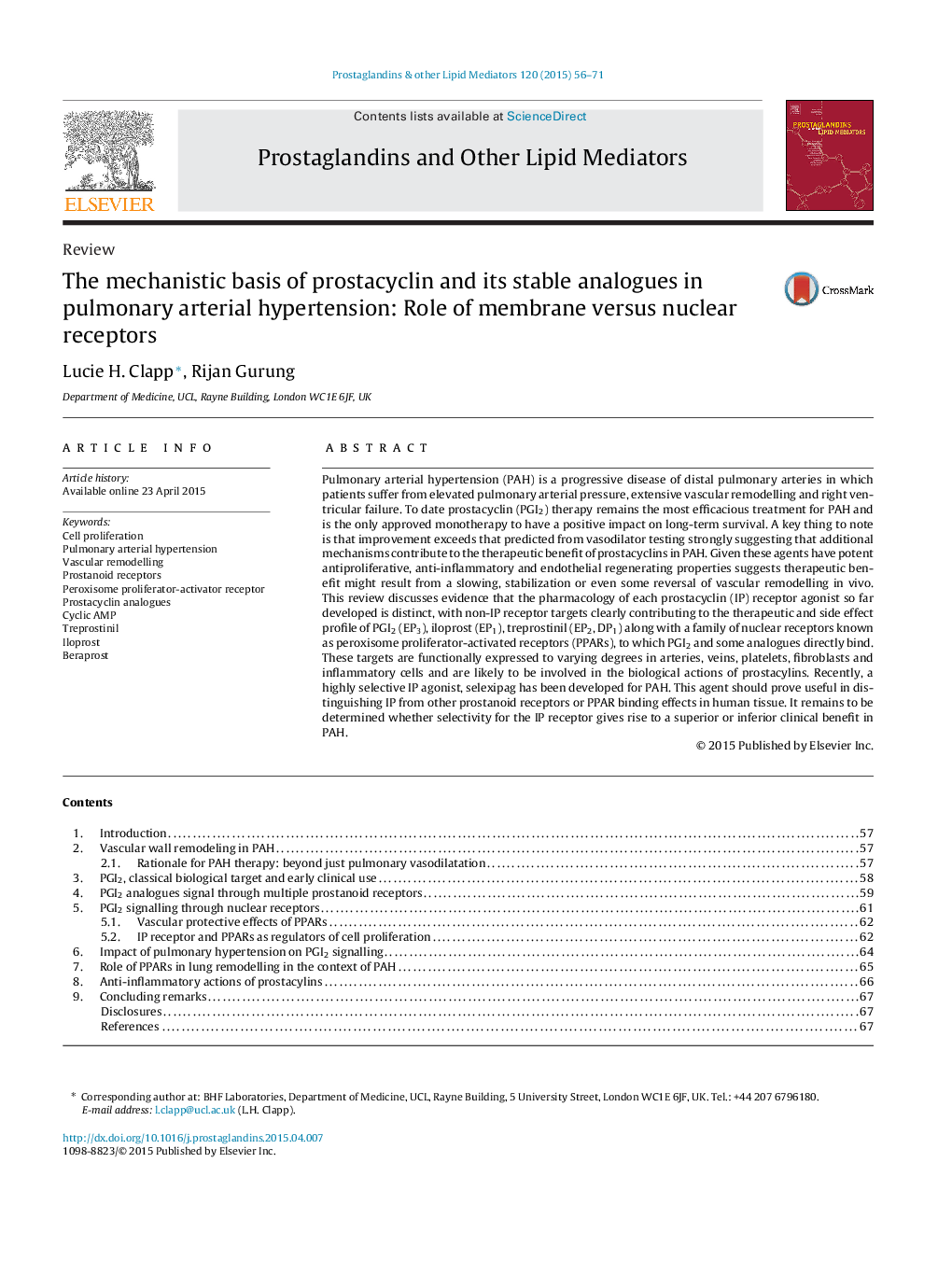| Article ID | Journal | Published Year | Pages | File Type |
|---|---|---|---|---|
| 2019543 | Prostaglandins & Other Lipid Mediators | 2015 | 16 Pages |
Pulmonary arterial hypertension (PAH) is a progressive disease of distal pulmonary arteries in which patients suffer from elevated pulmonary arterial pressure, extensive vascular remodelling and right ventricular failure. To date prostacyclin (PGI2) therapy remains the most efficacious treatment for PAH and is the only approved monotherapy to have a positive impact on long-term survival. A key thing to note is that improvement exceeds that predicted from vasodilator testing strongly suggesting that additional mechanisms contribute to the therapeutic benefit of prostacyclins in PAH. Given these agents have potent antiproliferative, anti-inflammatory and endothelial regenerating properties suggests therapeutic benefit might result from a slowing, stabilization or even some reversal of vascular remodelling in vivo. This review discusses evidence that the pharmacology of each prostacyclin (IP) receptor agonist so far developed is distinct, with non-IP receptor targets clearly contributing to the therapeutic and side effect profile of PGI2 (EP3), iloprost (EP1), treprostinil (EP2, DP1) along with a family of nuclear receptors known as peroxisome proliferator-activated receptors (PPARs), to which PGI2 and some analogues directly bind. These targets are functionally expressed to varying degrees in arteries, veins, platelets, fibroblasts and inflammatory cells and are likely to be involved in the biological actions of prostacylins. Recently, a highly selective IP agonist, selexipag has been developed for PAH. This agent should prove useful in distinguishing IP from other prostanoid receptors or PPAR binding effects in human tissue. It remains to be determined whether selectivity for the IP receptor gives rise to a superior or inferior clinical benefit in PAH.
